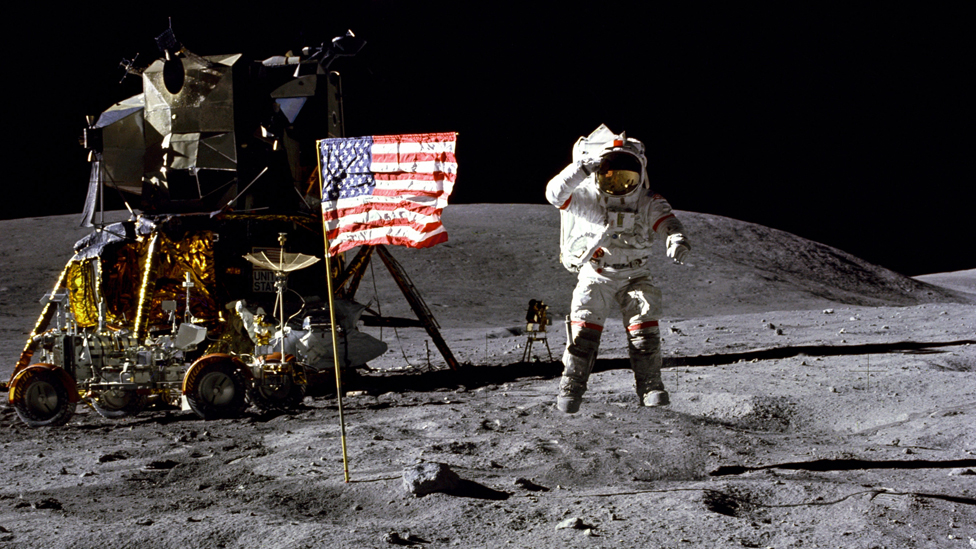International Moon Day marks the anniversary of the first landing by humans on the Moon as part of the Apollo 11 lunar mission

International Moon Day is an annual day dedicated to the Earth’s one and only natural satellite, the Moon! It’s held every year on July 20, which is the anniversary of the day on which astronauts Neil Armstrong and Buzz Aldrin famously set foot on the Moon in 1969. The Moon landing is still considered one of humanity’s greatest achievements, and so International Moon Day is all about commemorating the Apollo 11 mission while teaching people about the Moon and astronomy.
Significance
The General Assembly declared International Moon Day, a United Nations-designated international day to be observed annually on July 20, in its resolution 76/76 on “International cooperation in the peaceful uses of outer space” in 2021.
International Moon Day marks the anniversary of the first landing by humans on the Moon as part of the Apollo 11 lunar mission.
The celebrations will also consider the achievements of all States in the exploration of the Moon and raise public awareness of sustainable Moon exploration and utilisation.
History
American astronauts Neil Armstrong, and Edwin ‘Buzz’ Aldrin became the first humans in history to land on the Moon on July 20, 1969. The grand Apollo 11 mission took place eight years after the national goal announcement by US President John F Kennedy to send a man to the moon by the end of the 1960s.
The idea for the mission to send astronauts to the moon started when President Kennedy appealed to a special joint session of Congress in 1961, stating “I believe this nation should commit itself to achieving the goal, before this decade is out, of landing a man on the moon and returning him safely to Earth.”
At the time of Kennedy’s proposal, the United States was still head-to-head with the Soviet Union in advancements in space exploration and, since it was during the time of the Cold War, the proposal was welcomed. The first unmanned Apollo mission was initiated by the National Aeronautics and Space Administration, NASA, after five years of effort and hard work by their international team of engineers and scientists. The first mission served as a testing phase for the structural resilience of the launch spacecraft vehicle.
At 9:32 am on July 16, 1969, the whole world witnessed Apollo 11 take off from Kennedy Space Center with three astronauts on board. Neil Armstrong was the commander of the mission. The spacecraft entered the lunar orbit after three days, on July 19. The lunar module, Eagle, disengaged from the main command module the next day, manned by Armstrong and Aldrin. When Eagle touched the lunar surface, Armstrong radioed his historical message to Mission Control in Houston, Texas: “The Eagle has landed.”
At 10:39 pm, Armstrong exited the lunar module and made his way down its ladder. His progress was being recorded by a television camera attached to the module, transmitting signals back to Earth, where the world was watching with bated breath.
At 10:56 pm, Armstrong stepped on the moon’s powdery surface, and spoke his iconic words: “That’s one small step for man, one giant leap for mankind.”
THE REMARKABLE ASTRONAUTS WHO MADE THE EXTRAORDINARY JOURNEY
Neil Armstrong - Apollo 11: On July 20, 1968, Neil Armstrong became the first human to step onto the Moon.
Buzz Aldrin - Apollo 11: Alongside Armstrong, Buzz Aldrin made history as the second person to walk on the Moon.
Charles "Pete" Conrad - Apollo 12: Conrad was the commander of the Apollo 12 mission and touched down on the Moon's surface on November 19, 1969. He and his fellow astronaut, Alan Bean, conducted two successful Moonwalks.
Alan Bean - Apollo 12: As the lunar module pilot on Apollo 12, Alan Bean became the fourth person to walk on the Moon. He later transitioned from astronaut to artist, using his experiences to create lunar-inspired artwork.
Alan Shepard - Apollo 14: On February 5, 1971, Alan Shepard became the first American to hit golf balls on the Moon during the Apollo 14 mission.
Edgar Mitchell - Apollo 14: Joining Shepard on the Apollo 14 mission, Edgar Mitchell was the sixth person to walk on the Moon. After his astronaut career, he focused on exploring human consciousness and global sustainability.
David Scott - Apollo 15: David Scott commanded the Apollo 15 mission, during which he and fellow astronaut James Irwin conducted three Moonwalks.
James Irwin - Apollo 15: As part of the Apollo 15 mission, James Irwin became the eighth person to walk on the Moon.
John Young - Apollo 16: John Young commanded the Apollo 16 mission, and together with astronaut Charles Duke, conducted three Moonwalks.
Charles Duke - Apollo 16: As the lunar module pilot on Apollo 16, Charles Duke became the tenth person to walk on the Moon. He left a family portrait on the lunar surface as a symbol of humanity's connection.
Eugene Cernan - Apollo 17: On 11 December 1972, Eugene Cernan became the eleventh person to walk on the Moon.
Harrison H Schmitt - Apollo 17: Alongside Eugene Cernan, Harrison H Schmitt became the twelfth and the last person so far to walk on the Moon.